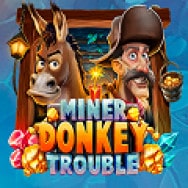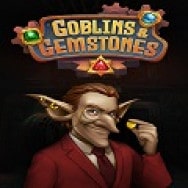Slots Rules
A system without rules is chaos? Or maybe it’s freedom! Whichever philosophical crowd you think you sit in, you won’t have a chance to check out your views and their validity in the world of online slots, because online slots are full of rules of all sorts: mathematical rules, computing rules, algorithms, legal limits, everything!
What are Online Slots Rules?
We’re going to look at a number of areas of slots rules. They are:
- Legal and regulatory slots rules
- Rules of maths and odds
- Slot game rule
- Slot site rules
That’s quite a lot of ground to cover, so let’s get started.

Best High Payout Slots
Online Slots Rules: Laws and Regulations
The first rules you’ll come up against if you’re interested in slots are laws.Gambling is a regulated pursuit in almost every legal jurisdiction in the world.
These laws might puzzle you, and they might annoy you, but on balance they’re probably a good thing for a couple of reasons:
- Addiction Gambling, including slots, can be addictive. Most societies accept that there should be some limits placed on the accessibility of potentially addictive or addicting substances or behaviours.
- Legitimacy The internet might have been designed by con artists. “You mean I get to collect money from people in a different country who will have almost no chance of ever finding me and all I have to construct to make them hand over the cash is some simple programmed web pages?!”
While you shouldn’t get carried away with paranoia about the honesty of the gambling industry (it’s probably about as honest as any other, which is to say not very), you should use laws that mean gambling sites have to be licensed as a tool to find good, legitimate sites.
The way you interact with these laws is important. If you go outside them then you will put yourself in some sense outside the law and you may well find that you don’t have any legal protections. It’s still possible for all sorts of bad things to happen around gambling at legal, licensed gambling websites, but if they are legal there is at least some chance of redress if things go wrong and it’s not your fault.
This does not apply to all slots. If you play slots without gambling you may be able to do so without any legal interactions at all. This isn’t true everywhere. For example, in the UK the Gambling Commission has now made it the law that any slots and gambling games should be age restricted, even if they are not played for money. That doesn’t mean all that much, as most age-verification just amounts to filling in a date of birth on a form, but it shows that a site is following at least one rule.
Use these rules to your advantage by never playing at a site that is not legal and licensed and never playing in a way that is not legal and licensed in the jurisdiction you are in while accessing the site.
Laws help to enforce some standards of fairness and competence and you should use this as a baseline for the way you interact with online slots – never play illegal games or at illegal sites.
Slots Rules 2: Maths and Odds
You might escape the rules of man by becoming an outlaw, founding your own planet, or simply being a plutocratic billionaire who doesn’t have to follow the rules you make for everyone else, but you won’t be able to escape the rules of maths and physics. And maths rule over the world of slots, which are essentially games of chance and probability.
Slot games work in the same way as card games, and the earliest slots were attempts to reproduce poker when laws in the US made playing cards for money illegal.
Immediately, we see the imposition of mathematical rules that benefit the game owner over the player. The first games tried to reproduce poker hands, but removed two cards from the standard deck in a way that reduced the likelihood of high-value hands being achieved during the game.
The modern slot game is both a long way from these simple machines – five revolving mechanical drums – and still operating to the same principles. Instead of mechanical chance we now have random events generated via a random number generator.
But the rules of mathematics that apply to the most sophisticated online games are the same that were applied to those simple games in barrooms and stores. The game is played on reels – or something standing in for them – that appear to spin to deliver a random set of symbols.
Players need to know what the reel set-up is: the “standard” game is a 5 by 3 set-up with five reels that each show three rows of symbols to give a playing area of 15 symbols. Across these in-play symbols will usually run a set of “pay lines” or “bet ways”. These are lines along which sets of symbols can be scored.
There are alternative methods of awarding sets though. Megaways games and other ways-to-wins games may count as pay-line matches symbols that appear on any adjoining reel. Some games – usually with very large reel sets – award prizes for groups or “clusters” of symbols.
Betting is the mathematical framework that has most impact on the player’s experience.
We simply can’t work out things like odds on modern online slots because there are too many potential variables that we don’t fully know. The most important thing for the player to understand is the simple mechanism that decides how much you bet.
Slot games take various approaches to this: some allow players to decide on which pay-lines they would like to bet, so that the total stake increases for each pay-line that you add to your choice. Others simply ask the player to choose a total stake, making each bet on all available pay-lines.
It’s not important to understand all of the mathematics behind this, but it is important to understand how much you’re spending and what you’re betting on, so do take a moment to check that out on each game you play. The rules of the game are often expressed in three, or more often two figures, the RTP and the hit frequency and volatility rating.
RTP is the most commonly used and most easily understood of these figures.
To take an obvious example, Starburst, the UK’s favourite slot game, has an RTP measure of 96.09%. RTP stands for theoretical return to player. If you take the RTP from 100% you get the “house edge”. This figure is basically the profit that is built into the mathematical model behind the reels. While every single spin must be random, something called the Law of Large Numbers kicks in. It’s the rule in mathematics that even perfectly random events will eventually conform to the rules of probability. So, if you flip a coin three times you may well find 100% of them to land the same way. But if you toss a coin thousands and thousands of times then the final result should end up fairly close to the most probable result, which is around 50/50.
It is within this frame that you should consider RTP.
The measure is published on most games and it does conform to standards. It is – we are told – calculated by running a simulation of the game (we’ve seen the figure of 1 billion spins) to model how it will behave in real life. The rtp then tells you how much of the money that is wagered in those simulations is returned as winnings to players. And the casino earns the “house edge” that is left over. This measure is the best measure we have of a game’s performance and it is still fairly loose.
Your single session shouldn’t produce enough spins to become a “large number” in this sense, so may well deviate wildly from this predicted average. The prediction also involves the simulations making decisions that would otherwise be made by players and the simulation may produce different decisions.
There’s also a problem with the market. While markets are supposed to, by competition, produce the best possible outcomes for consumers, what it more often actually produces is a minimum standard for the producers. That is largely the case with rtp numbers. Most of them are extremely close together.
So, it’s not completely accurate and it is unlikely that you will have much choice in range in any case. We choose an old game and gave you an rtp. However, Starburst now uses rtp ranges. This allows the game operator to change the rtp when they choose. We assume they do so in response to demand – using higher numbers when they want to attract more players. The other numbers we have relate to how often the machine delivers wins.
Volatility is not so precise. Companies can use their own measures, but reviewers and designers generally settle on naming it as low, medium, or high. Low volatility games pay out smaller prizes, but prizes are more likely to be awarded more often.
High volatility games pay out larger prizes but prizes are more likely to be awarded less often. A more recent and more precise measure is the hit rate or hit frequency. This is usually written as percentage. So, a game with a hit frequency of 35% (not uncommon) should deliver a win on 35% of its spins. You can see the figure expressed as a single number, telling you how many spins you should expect to wait between wins. Again, this figure is an average, long-term measure.
So, the tools we have for reading the rules of mathematics behind a slot game are relatively blunt instruments. However, they are all that players have, and learning how to read them is a decent first start in assessing a game.
Slot rules 3: Slot Game Rules
Every game has rules. Slot rules are relatively standardized and relatively easy to understand. They can be found in almost every case by clicking an i button on the control panel. We’re going to have a look at an example of what happens when you do that. The simple rules that no-one needs explaining are these: hit the spin button to play after selecting a betting amount. Looking at a recent release this time, we clicked on Mystic Joker by Vibra Gaming.
This divides the rules into a number of sections. The First includes the Basic Rules, which are:
- The game always plays with 25 lines.
- Wins are the prize amount multiplied by the stake on each line. Wins are added up before being paid out.
- Pay lines in this game run only from left to right.
- Special symbols are described, including wilds that substitute to create the highest possible win according to the pay table.
Then we learn about the Special Features.
The One Joker Wild can land on odd reels and when it does so it puts a random number of “mist wild” symbols on the screens.
When two Joker Wild symbol lands on odd reels to release a random number of balloon wilds that can be giant wilds and may also have multipliers. (Multipliers are what they sound like, a figure that your prize will be multiplied by).
If you see three joker wilds then you trigger the free spins feature. In this example you will win 10 free spins. The feature can be won again during the feature and the wilds can also come into play during the feature.
Then we have the pay table.
A pay table is the closest measure of odds we have because prizes do relate to the likelihood of a particular set of symbols landing. If something pays out at 10/1 odds for example, it must be less likely than a 1 in 10 chance to happen or the site wouldn’t make any profit. A pay table will list the prizes that are paid for each set of symbols.
In our example there are just 7 symbols:
- Some candies
- Juggling clubs
- Throwing aces
- Bars
- With the three special symbols (joker wilds, balloon wilds, and mist wilds) on top
You will also find the pay lines drawn out for you. This set of rules also contains a standard term:
- Malfunctions void all pays and plays
- If a game malfunctions during a spin you cannot win basically
Every game is different, but this is a not untypical set of game rules. The main takeaway for players is TO ACTUALLY READ THE RULES. The simple mechanics or most games are the same or very similar but the time investment taken to read the actual game rules is very small and it is certainly worth those couple of minutes to be on top of any variations and to avoid any nasty surprises.
Slots Rules 4: Site Rules
You will also have to abide by the rules of a site.
This includes the legally enforced regulations that we covered in the first part of this article. However, it goes beyond that. Very few people read the full terms and conditions on a casino website – the “I have read and agree to the terms and conditions” button must contain the most commonly told lie of the modern world. We’re not going to suggest you do that now necessarily. Most casinos have very similar rules but there are some things it is worth checking out.
Financial limits and pay-out fees are something you should check out. If you’re going to have to hand over a slice of your winnings for using your favourite payment methods then you ought to know about it in advance.
The main area where the rules might impinge on your actual play are in the area of bonuses. Bonuses are a common promotional tool of the casino world and they come with a world of rules all of their own.
Players get to learn about and accept these rules, but they can be shocking to new comers. The first and most common is the wagering requirement. The wagering requirement is an amount of money, usually defined as a multiple of the first deposit or the bonus that the player must spend at the site before they can withdraw money from a bonus.
Some of these terms are really bad. It is not untypical to find that you will have to pay 35-times your bonus to access the prize money from that bonus. There will almost certainly be a very long list of exceptions and exemptions about how you pay that wagering requirement off too – usually excluding the most popular, highest paying and best value games. This means that the purpose of a welcome bonus becomes abundantly clear – it is designed to turn a single deposited into a long-term customer.
SO, if you’re going to read one part of the terms and conditions on a casino site then you should definitely read the bonus terms and conditions before you accept a bonus.


































